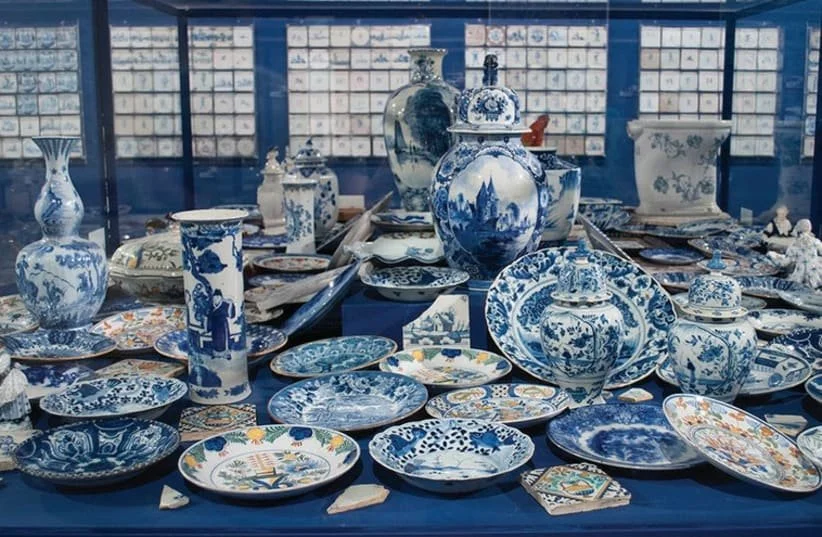Delft: A Brief History
Delft tile originated in the Netherlands around the 1600s and was mainly made in Delft, hence the name Delft tile. The artistry and technique weren’t only used for tiles; it was also widely used for things like plates/tableware, vases, figurines.
The method of glazing used for these tiles is quite unique. It’s called a “tin-glaze” where the tile is covered in a lead glaze, which gives the tile or earthenware the opaque white background and then tin oxide is added for the detail. Cobalt oxide is most widely used which gives the tiles the iconic white and blue look.
These tiles can withstand high firing temperatures, which is why they were popularly used on the inside of fireplaces. They transformed a once black sooty whole into a beautiful piece of art that was much easier to clean.
Historically, Delft tiles depicted murals and decorative patterns. One would see things like exotic animals, flowers, sea creatures, mythological creatures, and biblical scenes. Traditional Dutch landscapes could also be found painted on the surface, like windmills, castles, and farmland.
Nowadays, you can find Delft tiles on just about any vertical surface: kitchen backsplashes, bathroom walls, and fireplace surrounds to name a few. They’re a great way to accent a more cottagey style space and there is a wide variety of styles and scenes to choose from. They also don’t always come in white and blue, some tiles have a full-color design, allowing it to be versatile with any color palette. (insert picture of Keiler)
Photography Courtesy of Erin Little
We recently used these tiles in a client’s pantry, the subtle designs and colors add a nice splash of color to the otherwise neutral space. And who wouldn’t love looking at the little people working while prepping food or making your morning cup of coffee?



